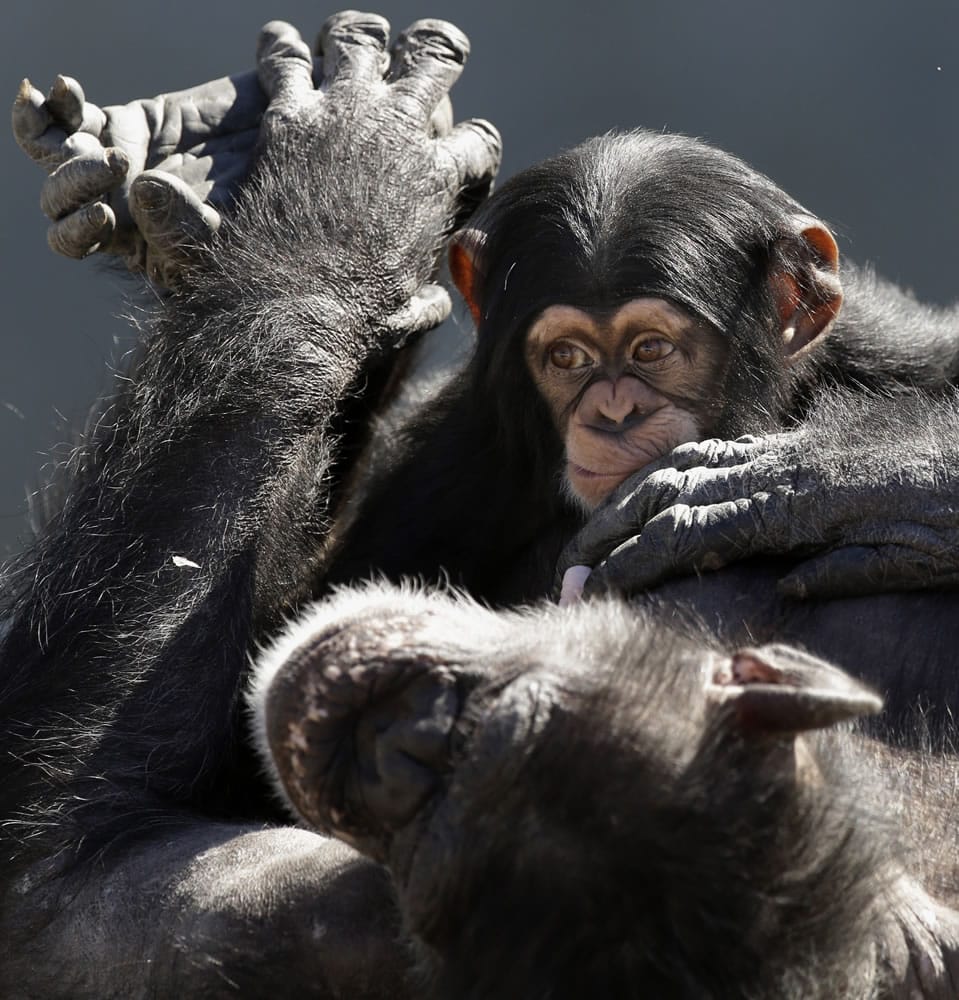WASHINGTON — They can be bought and sold online for personal use like a pair of new sneakers. They can be leased to medical labs, where they are poked, prodded and injected for a range of medical research projects.
But such practices may soon be on their way out. The U.S. Fish and Wildlife Service announced a proposal Tuesday to protect the great ape under the Endangered Species Act both in captivity and the wild.
Chimpanzees in the wild were listed as endangered 13 years ago, but those in captivity were listed as threatened, largely to allow the trade and use in medical experiments to continue. It is the agency’s only “split listing” for any endangered or threatened species, said Dan Ashe, the agency’s director.
Ashe said the split listing that allowed the commercial trade and use of chimpanzees in areas such as entertainment confused the general public into thinking that the animals are not threatened, when in reality they are struggling to survive. Human encroachment on their habitat and the hunting of apes for a delicacy called bushmeat has threatened them with extinction.
“The most important thing about this is it brings attention to the plight of chimpanzees in the wild,” Ashe said. “It’s an opportunity to talk to the public about the nature of the threat to chimps. They believe human use of these animals is not contributing to their endangerment.”
Fish and Wildlife’s proposal is a response to a request for an endangerment listing submitted by groups such as the Humane Society of the United States, the Association of Zoos and Aquariums and the Jane Goodall Institute to improve the understanding and treatment of apes.
The proposal dovetails with recent determinations by two federal research institutions that the use of chimpanzees for research related to neuroscience, infectious diseases and other ailments is unnecessary.
The United States is the only nation in the developed world that continues to use apes for research. European nations banned the practice years ago.
An endangered proposal, which must be submitted for months of public comment before being finalized at the end of the year, would criminalize the trafficking of chimpanzees across state borders for purchase and sale, and it would force research laboratories to request permits for tests that could harm apes.
Ashe said he is not sure how the proposal would impact the use of chimpanzees for circuses and Hollywood entertainment. That can be worked out in public comments, he said.
Conservationists want him to take a hard line. “There are breeders who breed them for pets and the entertainment industry . . . dressing them up, and clothes makes people think of them as not endangered,” said Kathleen Conlee, vice president for animal research issues at the Humane Society.
As a condition of any medical research permit, the requester must show it would benefit efforts to conserve apes. “Infecting a chimpanzee with hepatitis that only humans would get would not reach that bar,” Conlee said. “Does this enhance the species?”
The National Institutes of Health, which has employed apes as test subjects for decades, has scaled back its use of the animals in recent years. According to its website, NIH owned and supported more than 650 chimpanzees in research facilities where they are subjected to experiments, and in sanctuaries where they are not as of October 2012.
Housing the animals costs the agency about $12 million a year, according to information on the site. In 2000, Congress provided funds for Chimp Haven, a Louisiana sanctuary. NIH has nearly reached the $30 million congressional spending limit for the 109 apes it housed there, and as of January sought to raise $5 million to house more than 100 more.
Hundreds of other chimpanzees are in private hands, available for lease to laboratories for experiments. But those facilities could suffer economically if NIH continues to cut funding for medical research involving apes.
“Things are moving down a funnel, and what’s going to come out at the other end, we think, is the practical end of chimpanzee use in invasive research,” said John Pippin, director of medical affairs for the Physicians Committee for Responsible Medicine. “They will quickly see there’s no future in this, and they will get out of the business.”
But what NIH decides is still an open question. The agency maintains that medical research on chimpanzees has benefited humans. It led to vaccines for hepatitis A and B, now in use; the finding that elevated levels of salt in diets leads to high blood pressure; and the development of antibodies for treatments of certain cancers.
And yet, an NIH body called the Council of Councils proposed new federal rules in January to severely restrict medical and behavioral research on the agency’s chimpanzees that were available for research. A co-chairman of the panel, Daniel Geschwind, said “there is no compelling reason to maintain a large research population” and recommended that most apes be retired.
That recommendation, coupled with Tuesday’s proposal by Fish and Wildlife, should cause chimpanzee research to “wither up and go away,” Pippin said. “We will be the last country to get to that point, but better late than never.”



